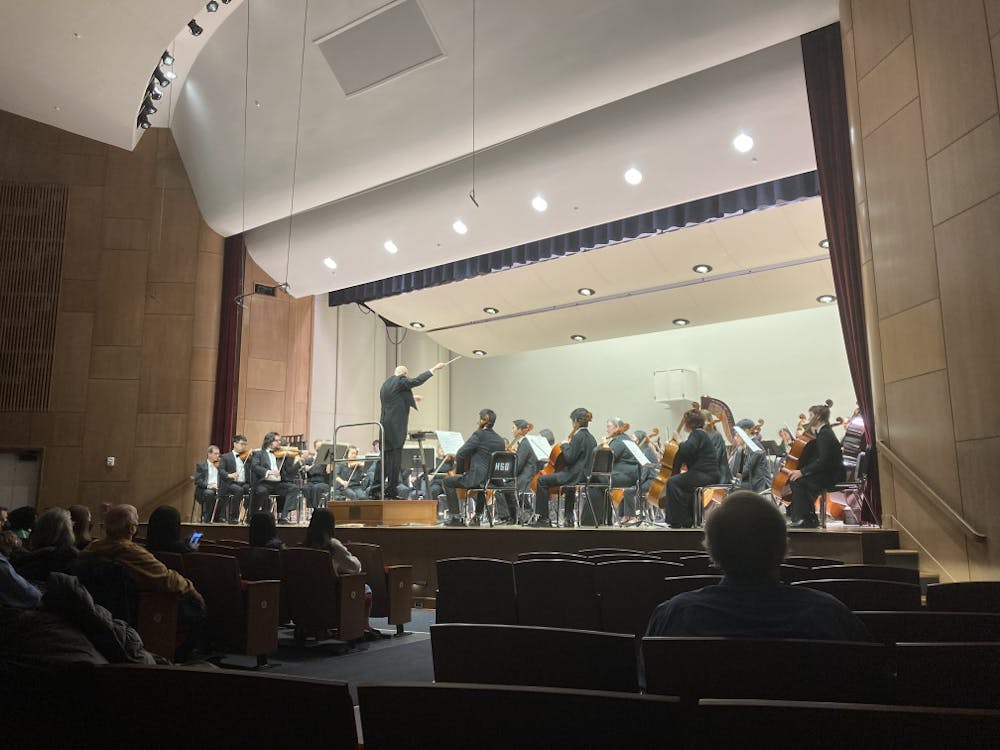Since the Hopkins Symphony Orchestra’s (HSO) return from pandemic restrictions in fall 2021, I’ve had the pleasure of attending almost every one of its concerts. Although the reason for this has more to do with my friends’ participation in the orchestra rather than any particular affinity for classical music, the viewing and listening experience has been extremely enjoyable.
My appreciation for classical music is largely that of an amateur. I might include the occasional classical piece in my regular rotation of songs or turn on a playlist of piano concertos for study sessions, but my ability to articulate the nuances of a score or the complexities of a player’s interpretation is nonexistent. This fact is especially heightened by my lack of musical knowledge; I never learned an instrument growing up.
So with the eyes and ears of a classical “pleb,” as my friend likes to call it, I sat down in the plush auditorium seats of Shriver Hall for another HSO concert on Dec. 3, the last one of the season.
The concert — a four-section program of Tōru Takemitsu’s “How Slow the Wind,” Carl Maria von Weber’s Concerto No. 1, Sergei Prokofiev’s Concerto No. 2 and Modest Mussorgsky’s “Pictures at an Exhibition” — began with the usual introduction from Jed Gaylin, the orchestra’s conductor.
Often, the introductory words set the tone for the performance, particularly in the passionate and articulate way in which Gaylin describes the movements and emotions of the pieces, inspiring a sense for the music that I alone would not be able to conceive.
That night, the introduction included a reading of the Emily Dickinson poem, “How Slow the Wind,” upon which the piece is based, as well as some brief words from Takemitsu himself, describing the delicate changes and the visual experience of the piece.
As the orchestra began to play, I noticed some of those described patterns, the repetitive cycle of tones punctuated by the sharp strum of strings and the occasional echoey ping that called to mind the melodic thud of a bamboo sōzu against wet rocks.
The highlight of the night for me came in the second section of the program, with Alex Fiterstein’s clarinet solo in Weber’s Concerto No. 1. Alluring and hypnotic, Fiterstein’s playing seemed to enthrall the entire audience, a heady dance of varying fast and slow melodies. A professor at Peabody, Fiterstein played with a comfortability that marked his experience and skill with the instrument.
Following a brief intermission, the orchestra began Prokofiev’s Concerto No. 2, featuring a violin solo from sophomore Sofia Taylor, one of the three HSO Concerto Competition winners.
In a sea of black and white, Taylor’s brilliant red dress stood out almost as sharply as her playing, which produced such light and pleasant sounds as a leisurely walk, while veering at times into solemn, trembling depths. It was easy to see why she had won the competition, and I found myself matching her smile as she finished and took a bow.
Concluding the night was Modest Mussorgsky’s “Pictures at an Exhibition,” a suite of ten pieces. This part of the program required its own introduction, which Gaylin provided generously, comparing the ten disparate but harmonious parts to the Biblical ten commandments.
The pieces themselves did not disappoint. The tell-tale Promenade theme marked the divisions between each part, and it was a joy to hear the subtle, or not so subtle, variations between each recurrence of the theme. Each piece seemed to build upon the last, while still retaining its unique flavor of sound, creating an overall engaging and almost inspiring listening experience.
While I wasn’t always able to perceive the complexities of each piece, it was easy to understand why the orchestra received a roaring standing ovation at the end of the night. Even listening as an amateur, I found myself moved by the orchestra’s ability to capture feelings of both glory and despair, triumph and loss. Without a doubt, this was my favorite of the HSO’s concerts.





